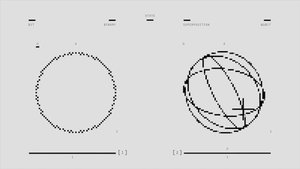The Critical Role of Zero Point in CNC Milling
In my two decades of working with CNC milling machines, I’ve seen countless projects derailed by one seemingly simple oversight: the zero point setup. The zero point is the foundation of every milling operation, yet it’s frequently misunderstood or hastily implemented, leading to scrap parts, machine crashes, and wasted time.
Why Zero Point Matters More Than You Think
- Precision Dependency: Every tool path and coordinate system hinges on the zero point. A 0.001″ error here can compound into a 0.010″ defect downstream.
- Repeatability Challenges: In high-mix production, inconsistent zero referencing can cause misalignment across batches.
- Tool Life Impact: Incorrect zeroing accelerates tool wear due to uneven loads or unintended collisions.
The Hidden Pitfalls of Zero Point Setup
Case Study: The $50,000 Mistake
In a aerospace component project, a team I consulted for struggled with inconsistent bore diameters across 200 parts. After weeks of troubleshooting, we traced the issue to an uncalibrated zero point shift caused by thermal expansion in the machine bed. By implementing a thermal compensation protocol, we reduced scrap rates by 32% and saved $50,000 in material costs over six months.
Common Zero Point Errors
- Manual Touch-Off Inaccuracy: Relying solely on manual edge finders introduces human error.
- Fixture Offset Neglect: Overlooking workpiece fixture offsets leads to misreferenced coordinates.
- Thermal Drift Ignorance: Machines expand with heat, shifting the zero point unnoticed.
Expert Strategies for Flawless Zero Point Execution
1. Leverage Probing Systems for Unmatched Accuracy
- Laser Probes: Achieve ±0.0002″ repeatability by automating tool and workpiece measurement.
- Touch Triggers: Ideal for high-speed setups, reducing manual intervention.

Data Comparison: Manual vs. Probing Zero Setup
| Method | Time per Setup | Accuracy (in) | Scrap Rate |
|—————–|—————-|—————|————|
| Manual Edge Finder | 5 min | ±0.002″ | 8% |
| Touch Probe | 1 min | ±0.0005″ | 1.5% |

2. Implement Thermal Compensation Protocols
- Pre-Warm Machines: Run a 15-minute warm-up cycle before critical jobs.
- Use In-Process Monitoring: Deploy sensors to track bed temperature shifts.
3. Standardize Workholding with Zero-Point Clamping Systems
- Benefits:
- Repeatability: Swap fixtures without re-zeroing.
- Time Savings: Reduce setup time by up to 70%.
Actionable Takeaways for Immediate Improvement
🔍 Validate Your Zero Point Daily: Use a dial indicator to check machine home position consistency.
⚙️ Adopt Probing Automation: Even entry-level CNC mills can integrate affordable probe systems.
💡 Document Thermal Trends: Log machine temperatures and zero shifts to identify patterns.
Pro Tip: “In high-tolerance jobs, always verify zero point after the first part—never assume the setup holds.”
Conclusion: Zero Point as a Competitive Advantage
Mastering CNC milling machine zero point isn’t just about avoiding errors—it’s about unlocking efficiency, extending tool life, and delivering consistent quality. By adopting the strategies above, you’ll transform a routine step into a cornerstone of precision machining.
Your Turn: Audit your zero point process this week. Share your biggest challenge in the comments—let’s solve it together.**
